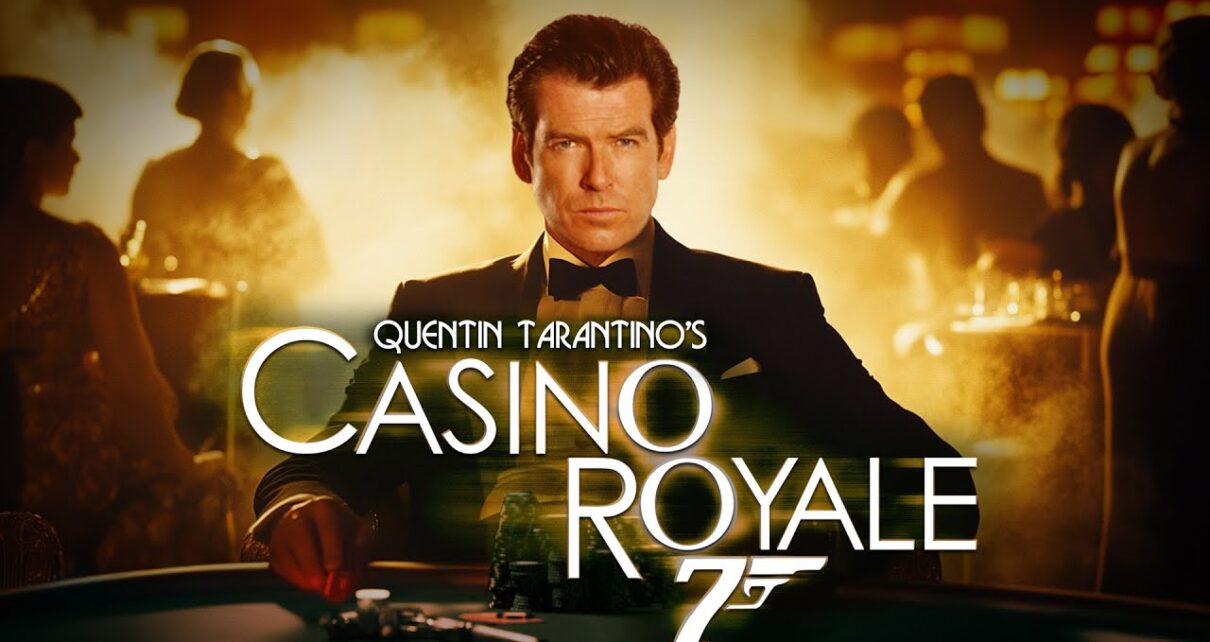The Original Plans for Quentin Tarantino’s Casino Royale
In the world of cinema, few names evoke as much recognition and respect as Quentin Tarantino. With his penchant for non-linear storytelling, sharp dialogue, and vibrant characters, Tarantino has made a significant impact on film. However, in the late 1990s, Tarantino found himself at the center of one of the most intriguing ‘what-ifs’ in movie history: his plans to direct Casino Royale, the James Bond film that would eventually be rebooted in 2006 with Daniel Craig.
The Backstory
By the late 1990s, the James Bond franchise had become iconic yet somewhat stagnant. The last official film, Die Another Day (2002), received mixed reviews, and fans were eager for a fresh take on the beloved secret agent. In the midst of this, the film rights to Casino Royale, originally written by Ian Fleming in 1953, were available. The cinematic history of Casino Royale had been tumultuous; it had previously been adapted as a 1967 comedy and a made-for-TV movie in the 1950s. Given this context, it was clear that a new cinematic interpretation of this classic story had the potential to reinvigorate the franchise.
During this period, Tarantino expressed a keen interest in directing a Bond film, claiming Casino Royale was a natural fit for his unique vision. The original plan formulated by Tarantino was to produce a film that adhered closely to Ian Fleming’s original narrative while introducing his signature style.
Tarantino’s Vision
Tarantino envisioned Casino Royale as a period piece set in the early 1960s, taking place just before the events of Dr. No, the first official Bond film. This would allow for a more grounded, character-driven story that explored Bond’s early days as a 00 agent. Unlike the more fantastical elements of past Bond films, Tarantino’s version would have stripped away some of the over-the-top gadgets and embraced more realistic, gritty storytelling.
Central to Tarantino’s vision was the casting of an actor who could redefine the character of James Bond. In interviews, he expressed a desire to cast someone unconventional, such as a young actor like Hugh Jackman or even a performer outside the typical action-hero mold. This ambition was to create a multi-layered Bond who displayed vulnerability, emotional depth, and complexity—qualities often glossed over in previous portrayals.
The Script and Character Development
Tarantino’s screenplay for Casino Royale was rumored to be a reinvention of the character, focusing heavily on Bond’s psychological struggles and moral dilemmas. The script would include an exploration of Bond’s psyche, particularly how his experiences as a spy impacted his relationships, personal life, and even his loyalty to his country. This level of character development was seen as a departure from the slick, womanizing portrayal that had defined Bond for decades.
The plot would closely follow the original narrative, which centers around the high-stakes game of poker between Bond and the antagonist Le Chiffre, a financier of terrorists. However, Tarantino intended to incorporate his distinctive pacing and dialogue, ensuring that conversations between characters would be just as gripping as the action sequences.
The Hurdles and the Aftermath
Despite the exciting prospects of a Tarantino-helmed Casino Royale, several challenges arose. The producers of the Bond franchise were reluctant to take a risk on Tarantino, whose stylistic approach often alienated mainstream audiences. Additionally, there were concerns about the film’s commercial viability, especially considering Tarantino’s track record of creating films that, while critically acclaimed, often divided viewer opinion.
Ultimately, the project did not come to fruition, and in 2006, Casino Royale was rebooted with director Martin Campbell at the helm and Daniel Craig cast as Bond. This new interpretation of the character successfully combined modern action with a more emotional and complex portrayal of Bond, echoing some of the themes Tarantino had envisioned.
Conclusion
While Quentin Tarantino’s original plans for Casino Royale never came to pass, they remain a fascinating glimpse into what could have been—a darker, more character-focused exploration of one of cinema’s most enduring icons. His vision would have certainly deviated from the long-established formula of the Bond series, leading to a potentially groundbreaking entry that may have redefined the tone and direction of the franchise for years to come. The legacy of Casino Royale stands firm as a modern classic, but the specter of Tarantino’s vision lingers, serving as an intriguing ‘what-if’ that fans and film historians continue to ponder.

